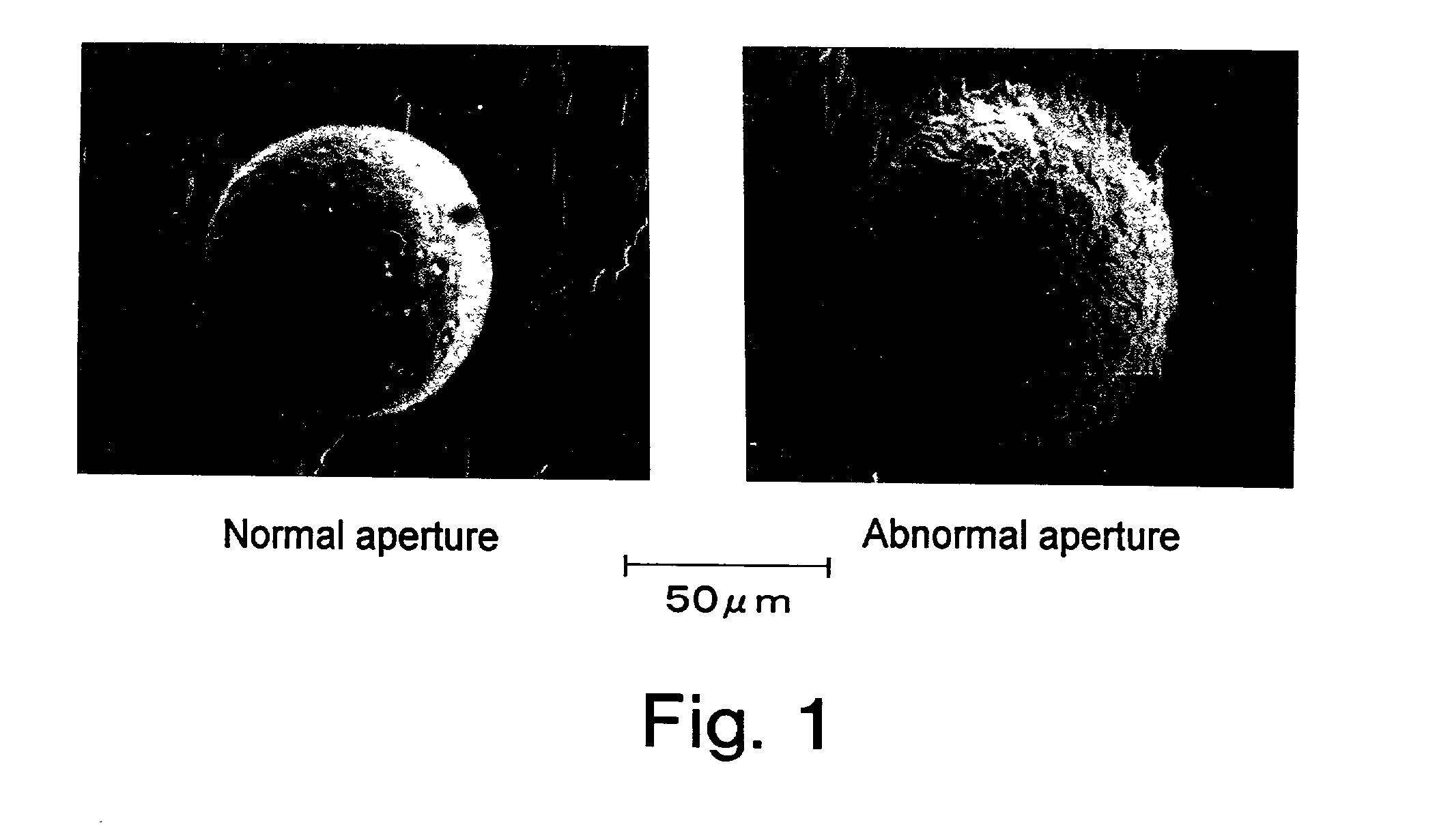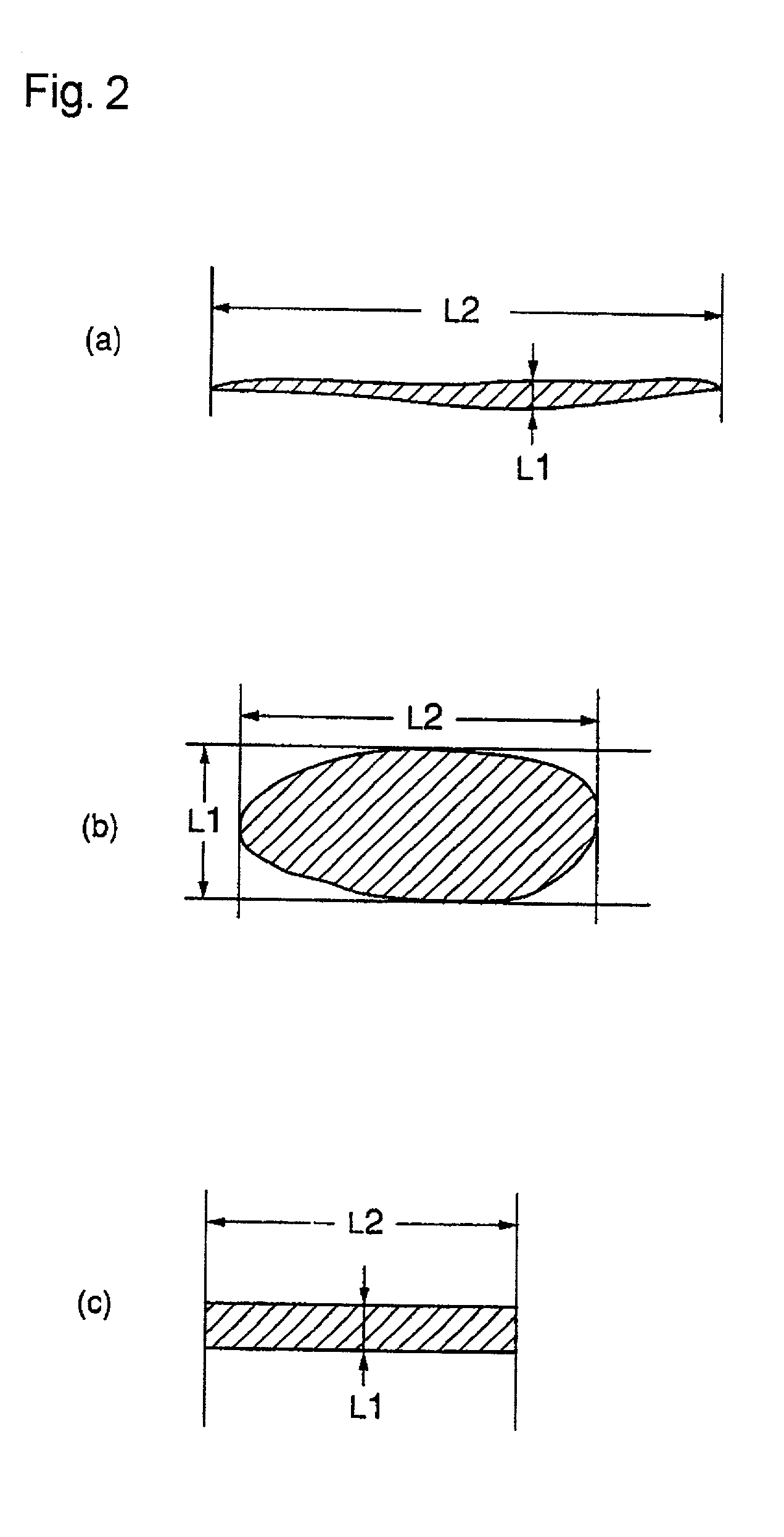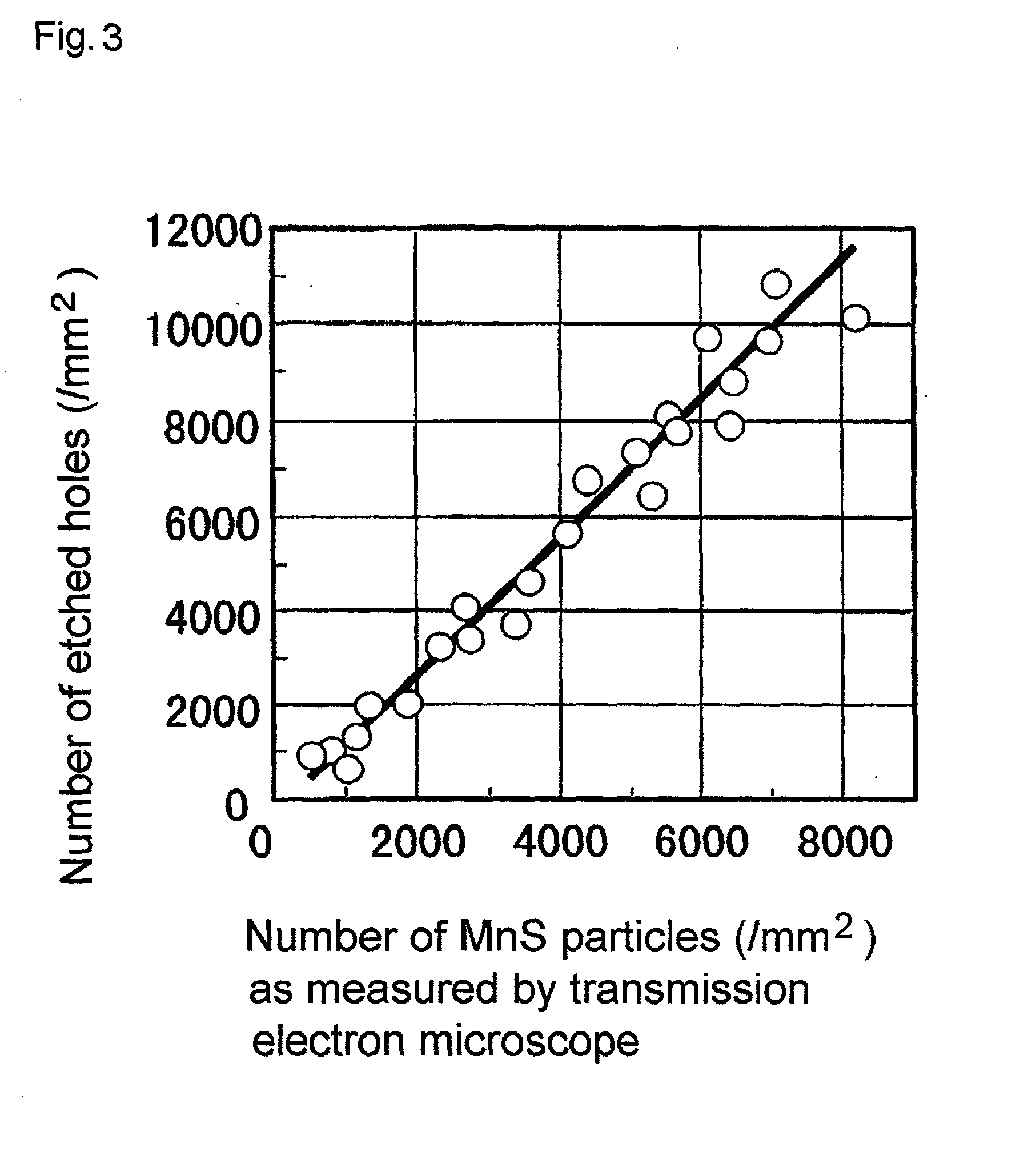Fe-Ni alloy shadow mask blank with excellent etch perforation properties and method for manufacturing the same
a technology of etch perforation and shadow mask, which is applied in the field of etch perforation mask blanks of fe-ni alloy, can solve the problems of reducing mns and other inclusions to zero, and achieve the effect of reducing the unevenness of the aperture diameter
- Summary
- Abstract
- Description
- Claims
- Application Information
AI Technical Summary
Benefits of technology
Problems solved by technology
Method used
Image
Examples
example 5
(Annealing not Accompanied with Recrystallization)
[0133] With regard to the method of effecting MnS precipitation by carrying out an annealing not accompanied with recrystallization after the final rolling (rolling III), the relations between the annealing conditions (annealing method, temperature inside the annealing furnace, and retention time in the furnace) and the number of etched holes formed upon immersion in a 3% nitric acid-ethyl alcohol solution were studied. The method of measuring the etched holes was the same as used in Example 1. The resulting structures were also observed in the same way. In this test, 200 mm-thick slabs of the same compositions as in Example 1 were cold rolled (final cold rolling, rolling III) to a thickness of 0.1 mm under the same conditions as for No. 6 in Example 1, and annealed. The results are given in Table 5. A comparison between batch and continuous annealing operations shows that batch annealing produces increased numbers of etched holes.
5T...
PUM
| Property | Measurement | Unit |
|---|---|---|
| Temperature | aaaaa | aaaaa |
| Temperature | aaaaa | aaaaa |
| Temperature | aaaaa | aaaaa |
Abstract
Description
Claims
Application Information
 Login to View More
Login to View More - R&D
- Intellectual Property
- Life Sciences
- Materials
- Tech Scout
- Unparalleled Data Quality
- Higher Quality Content
- 60% Fewer Hallucinations
Browse by: Latest US Patents, China's latest patents, Technical Efficacy Thesaurus, Application Domain, Technology Topic, Popular Technical Reports.
© 2025 PatSnap. All rights reserved.Legal|Privacy policy|Modern Slavery Act Transparency Statement|Sitemap|About US| Contact US: help@patsnap.com



